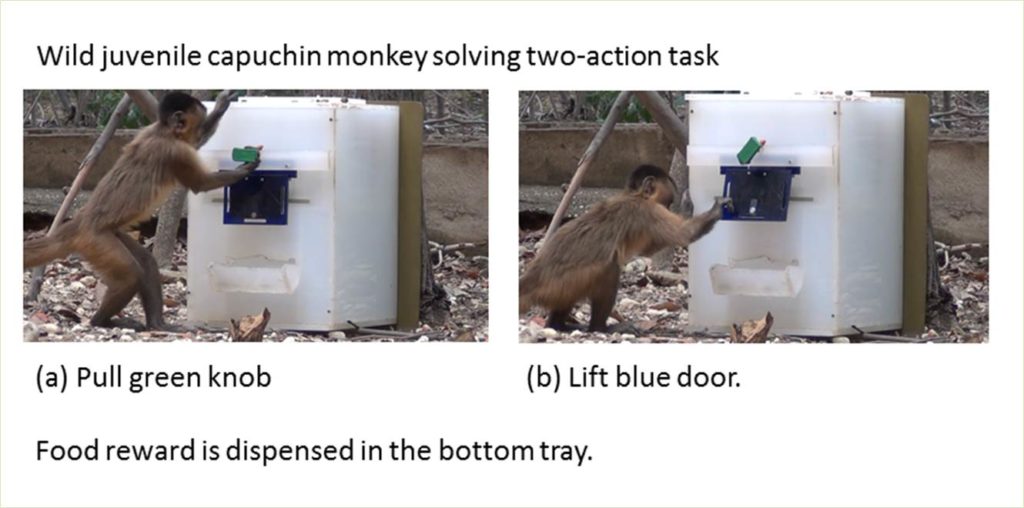Guest Blogger – Annabel Scott , BSc Environmental Stewardship – Glasgow University
In a recent study by Wilson et al. (2013), the facial structure of capuchin monkeys was examined to see whether differences in this link to different personality traits.
Sixty-four capuchins were examined from three institutes: our Living Links monkeys here in Edinburgh Zoo, the Language Research Centre at Georgia University and the Laboratory of Comparative Ethology at the National Institute of Health. Front facing photographs were used to find the measurements for each capuchin. fWHR (facial width to height ratio) was determined by the ratio of bizygomatic width to upper face height as shown below. Lower face/face height (eyelids-chin/height of whole face) and face width/lower face height (bizygomatic width/height of whole face) were also calculated.
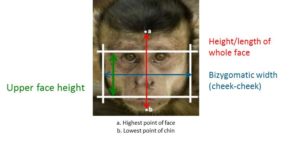
Personality ratings were collected for each individual by a measure used in non-human primates. These were scored on a 7-point scale, which ranged from no signs of the trait (1) to extreme display (7). Five traits were looked at; assertiveness, openness, attentiveness, neuroticism and sociability. Below are photos that illustrate the differences in capuchin face morphology.

Examinations of lower face/face showed a significant effect of age as the ratio increases, however no sign of sexual dimorphism. Neuroticism was found to be non-dimorphic in capuchins, but in humans both neuroticism and lower face/face height are sexually dimorphic. fWHR is not sexually dimorphic in humans. Capuchins with higher ratios of lower face/face height (longer lower face) were found to be more neurotic and less attentive. Therefore facial morphology of capuchins determines three personality traits: assertiveness, attentiveness and neuroticism.
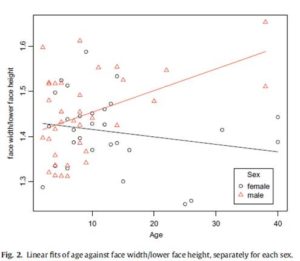 The following graph (Fig. 1.) shows how face width/lower face height has a significant age × sex interaction, with males showing a higher face width/lower face height ratio than females. These sex differences increase across the life span. Humans also exhibit sexual dimorphism in this facial metric, however women show higher ratios than men and this also increases with age.
The following graph (Fig. 1.) shows how face width/lower face height has a significant age × sex interaction, with males showing a higher face width/lower face height ratio than females. These sex differences increase across the life span. Humans also exhibit sexual dimorphism in this facial metric, however women show higher ratios than men and this also increases with age.
fWHR and face width/lower face height both showed a link to assertiveness. One possible reason that these facial metrics relate to personality is due to the connection with status and leadership traits. Status in humans can be based on force or friendship, lower face/face height however, may be driven by vigilance and attention span, therefore linked to a social form of status.
Openness and sociability appear to affect sociality and cognition in capuchins. Sexual dimorphism may be linked to differences in morphology, so future work with these species may help to understand what determines species-specific personality traits and why they are associated with facial structure.
Further studies could look at sex-specific age growth in capuchin facial metrics and could also examine the effects of location and body weight. Examining the lower face/face height further could tell us the origins of status effects on well-being and emotional traits, which could be linked to status in humans.
Reference
Wilson, V., Lefevre, C.E., Morton, F.B., Brosnan, S.F., Paukner, A. and Bates, T.C. (2013). Personality and facial morphology: Links to assertiveness and neuroticism in capuchins (Sapajus [Cebus] apella), Personality and Individual Differences. (IN PRESS)
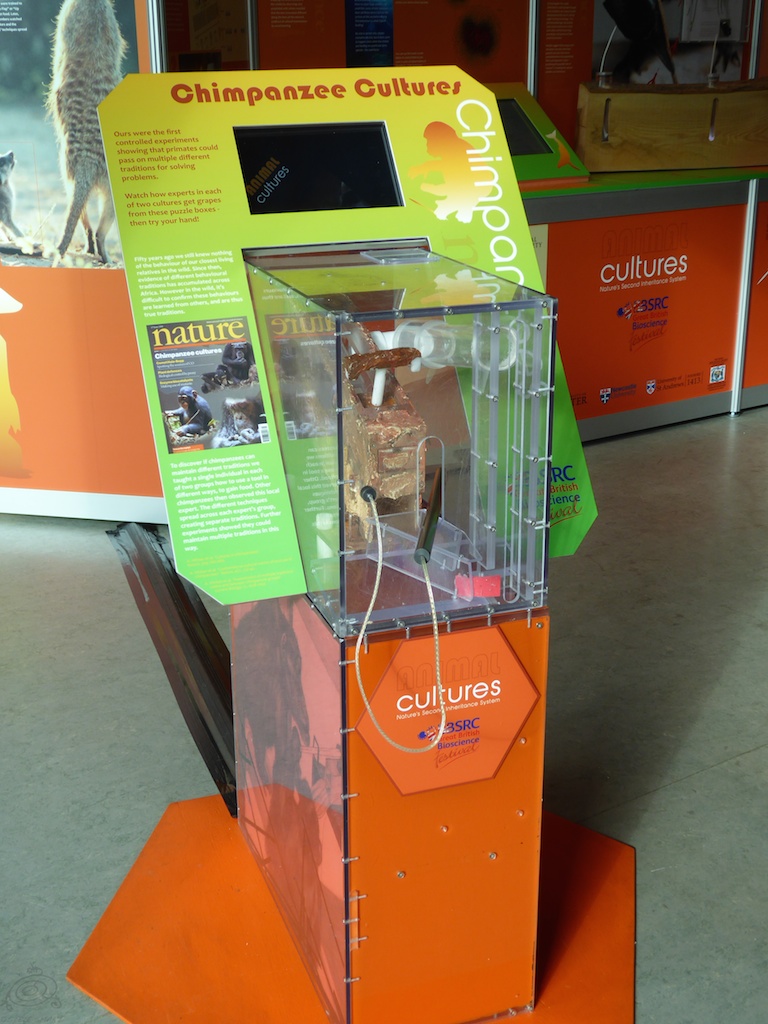 This week the science exhibit Animal Cultures is at Edinburgh Zoo. It is based in the Budongo Trail, where you will also see our resident chimpanzees (including the two-month old baby – Velu) Have a go at a chimp puzzle, while they watch you. Will you be as good as a chimp at learning how to find the hidden food?
This week the science exhibit Animal Cultures is at Edinburgh Zoo. It is based in the Budongo Trail, where you will also see our resident chimpanzees (including the two-month old baby – Velu) Have a go at a chimp puzzle, while they watch you. Will you be as good as a chimp at learning how to find the hidden food?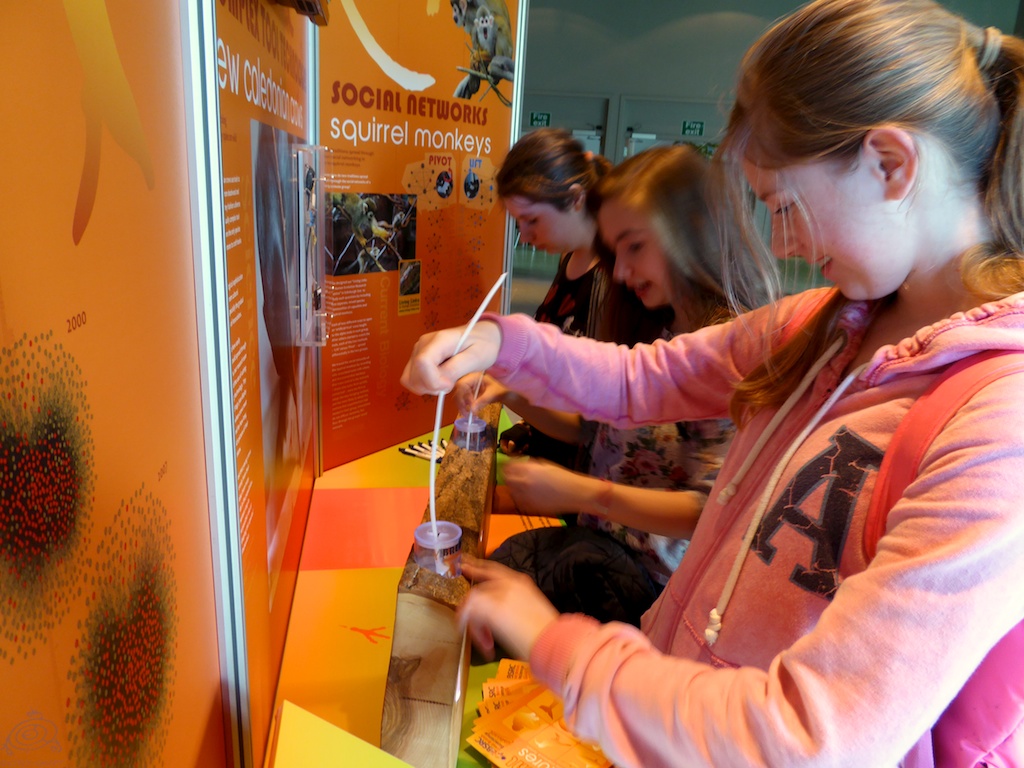 afield have used thousands of hours of observations, advanced gadgetry and fun experiments to work out how animals, from guppies to capuchins monkeys, learn from each other and form traditions. You can try your hand at recording the behaviour of vervet monkeys, attempt to hook out some delicious grubs using crow tools and see how meerkats teach their young to catch deadly scorpions.
afield have used thousands of hours of observations, advanced gadgetry and fun experiments to work out how animals, from guppies to capuchins monkeys, learn from each other and form traditions. You can try your hand at recording the behaviour of vervet monkeys, attempt to hook out some delicious grubs using crow tools and see how meerkats teach their young to catch deadly scorpions.
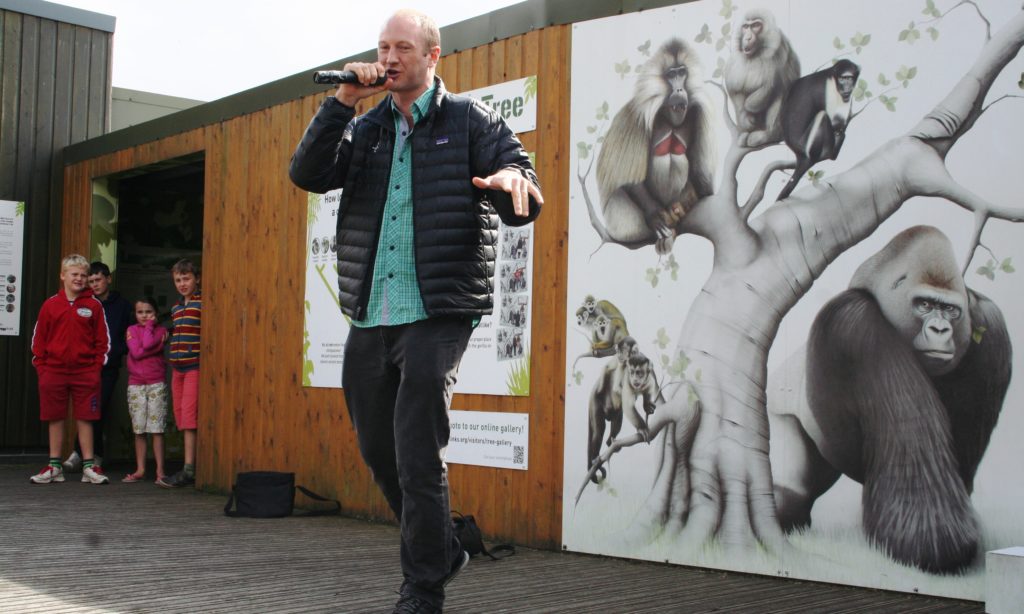
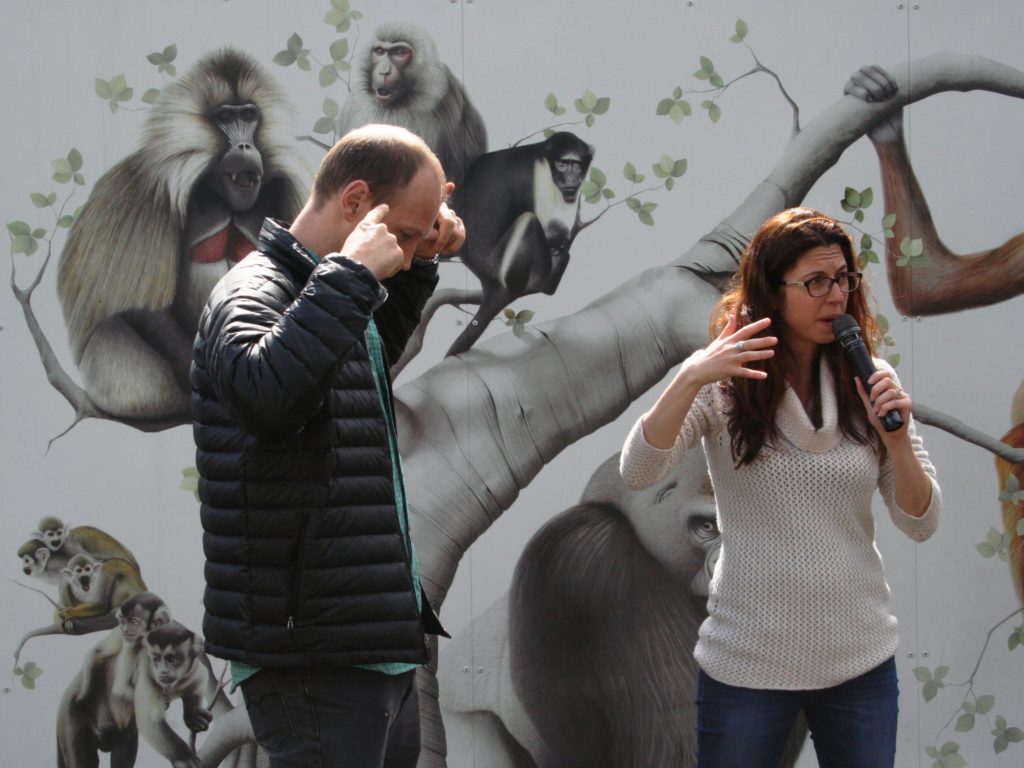
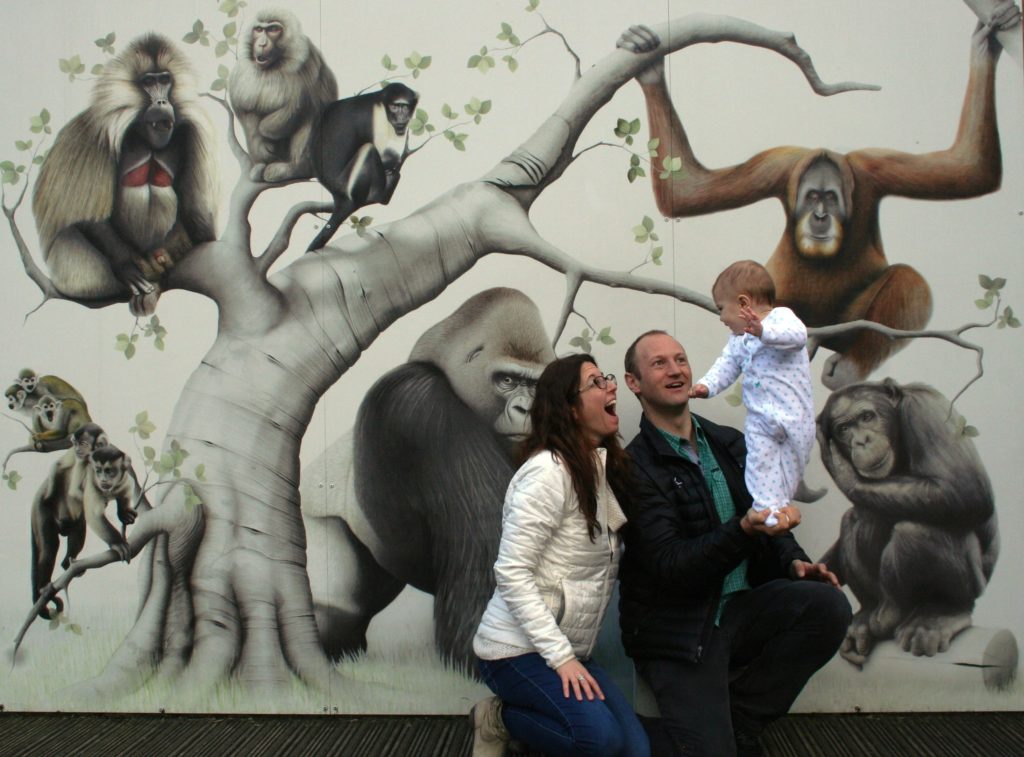
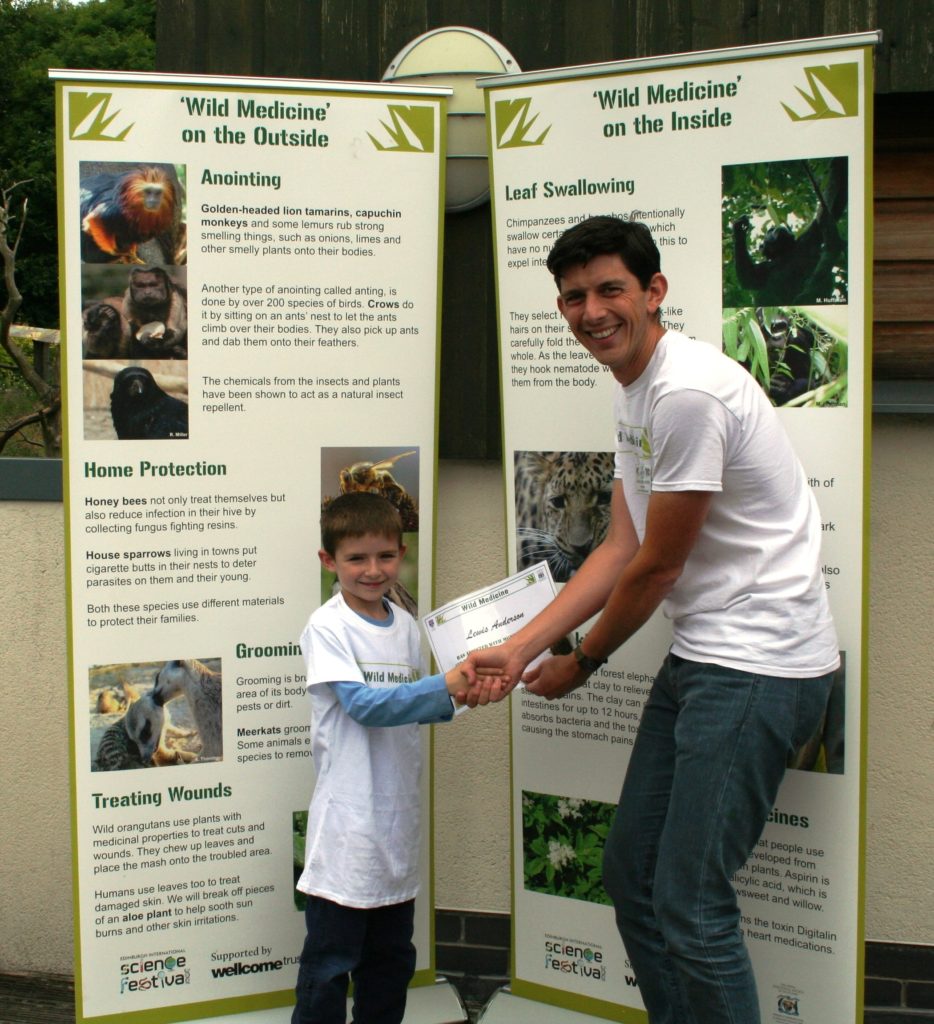

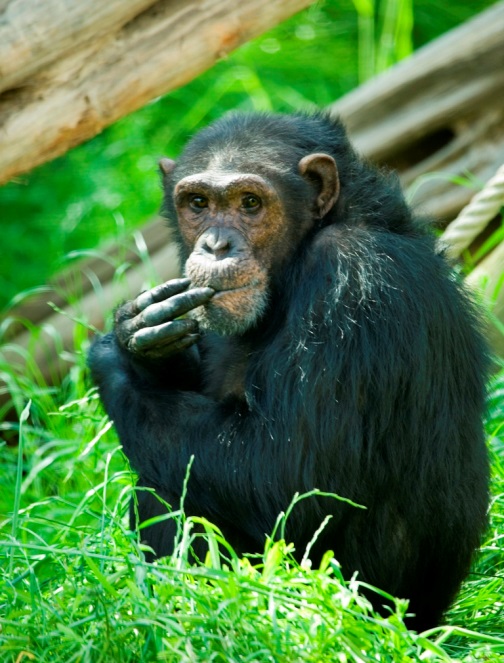
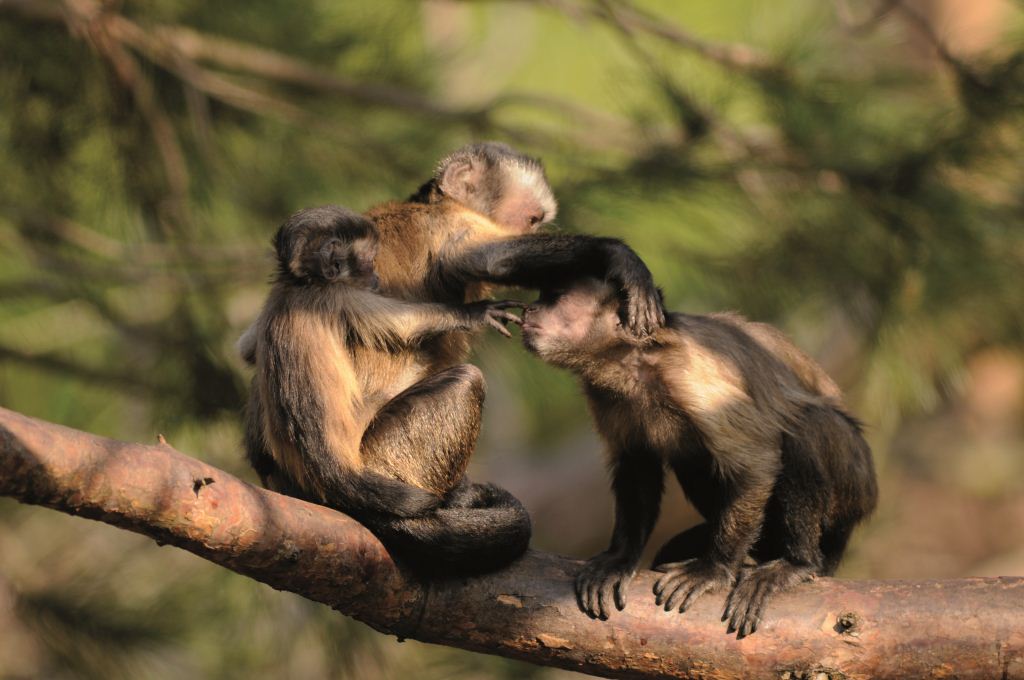

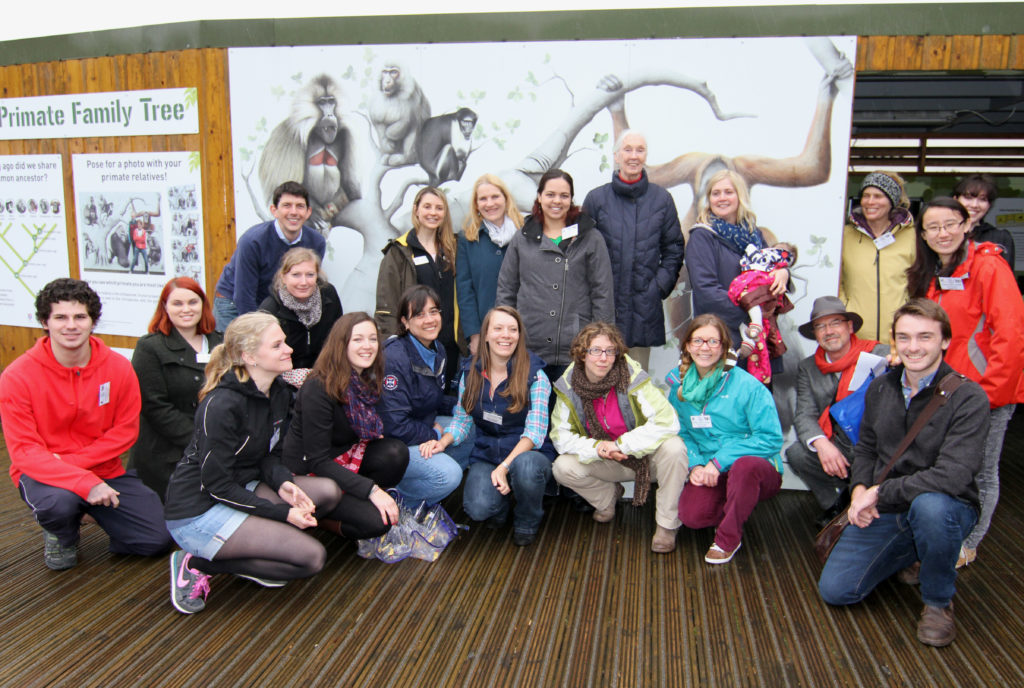
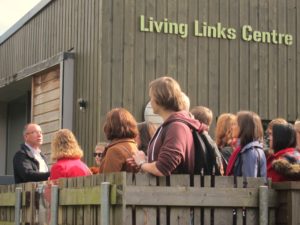



 Congratulations to St Andrews researcher Dr Erica van de Waal who has been awarded the 2014 Niko Tinbergen Award of the Ethologische Gesellschaft, the Society which organises the annual European Conference on Behavioural Biology (ECBB).
Congratulations to St Andrews researcher Dr Erica van de Waal who has been awarded the 2014 Niko Tinbergen Award of the Ethologische Gesellschaft, the Society which organises the annual European Conference on Behavioural Biology (ECBB).
